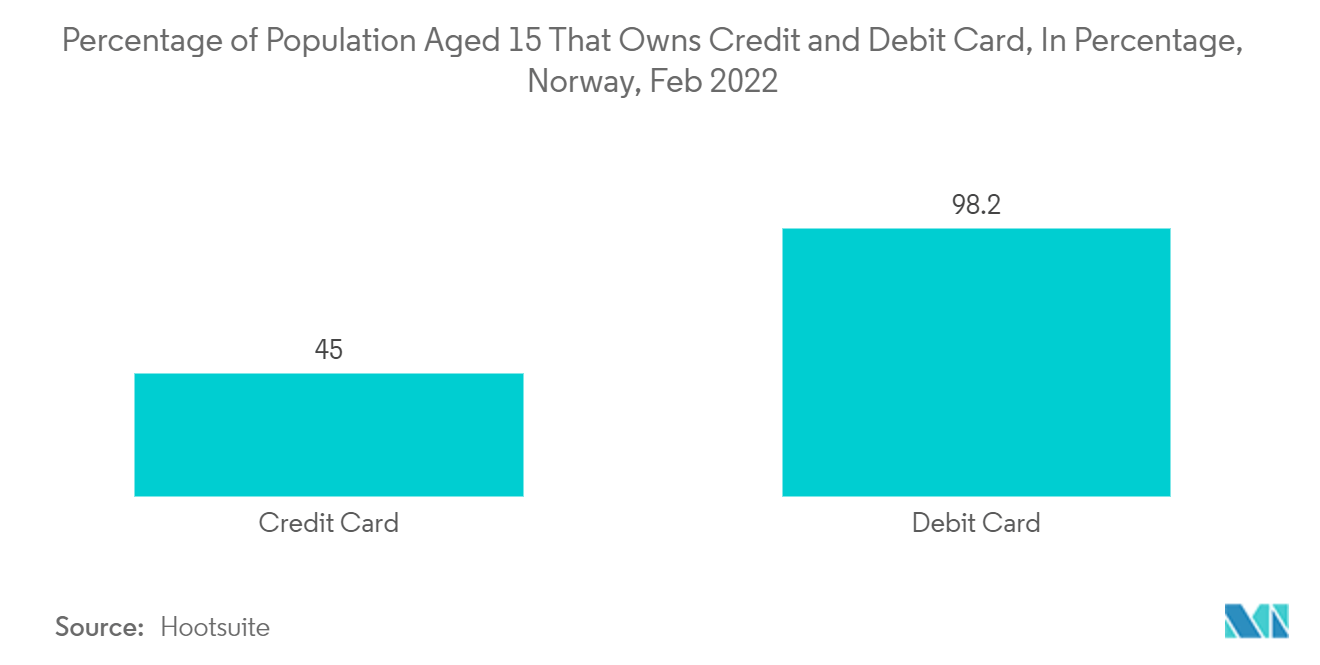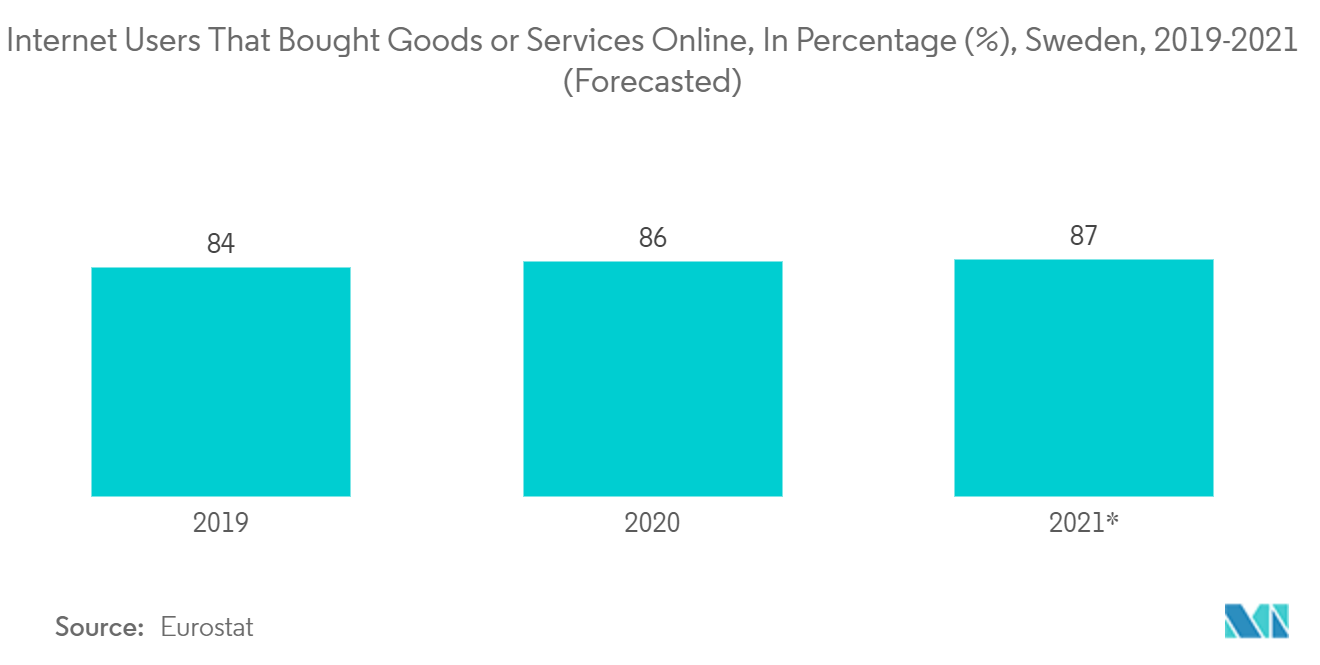Market Trends of Sweden E-commerce Industry
This section covers the major market trends shaping the Sweden E-commerce Market according to our research experts:
Growing Use of Card Payments and Internet Banking for Online Shopping Expected to Grow the E-commerce Market
- Swedish consumers make purchases more frequently by using a card or Swish app instead of cash. This trend has grown stronger during the coronavirus pandemic. As per HootSuite, 45% of the population in Sweden owns a credit card, out of which 41.5% are female, and 48.5% are male. Additionally, 98.2% population owns a debit card, out of which 99.1% are female, and 97.4% are male.
- The use of cards as payment media has increased gradually over time. A rapid structural transformation is taking place in retail and e-commerce payments, with increasing automation as the main driving force.
- Several fintech players have made it easier to shop online by offering easy payment checkout in Sweden. For instance, SoftBank-backed Swedish fintech giant Klarna offers solutions where one can pay via one's online bank or via an invoice when purchasing online. For the consumers who want to make payment using a card, it is often possible to register their card details with the retailer or a payment services provider, allowing purchases to be made in a single click.
- Moreover, internet banking has expanded very rapidly in Sweden. All banks offer internet services, which include access to account information and the possibility of carrying out transfers between accounts, bill payments, and online securities trading. According to banking statistics, 20-25% of the private customer base has begun to use online banking services regularly.
- Furthermore, big tech companies in Sweden, such as Apple and Google, offer digital payment solutions like Apple Pay and Google Pay, which are connected to the customer's usual credit and debit card. These digital payment solutions make it possible to pay with a contactless payment using a mobile phone for online shopping on an e-commerce website.
- All of the factors mentioned above are expected to increase the use of card payments for online shopping, which will drive the e-commerce market over the forecast period.

Fashion and Apparel Segment is Expected to Hold the Largest Share
- The e-commerce sales of the fashion segment hold the largest market share in Sweden's e-commerce market. This is mainly due to various benefits offered by e-commerce companies in the region, such as free delivery, loyalty points, coupons, discounts, and simple online checkouts.
- Moreover, e-shoppers in the region are gradually increasing over the years, mainly in the age gap between 16-44, which gives more importance to clothing and footwear. As per Eurostat, the percentage of internet users that bought goods or services online was 84% in 2019 and grew to 87% in 2021.
- With the fastest-changing fashion environment, new fashion trends are coming every day. Moreover, despite originating as one of the biggest fast fashion producers, Sweden has an excellent relationship with sustainable fashion, which encourages consumers to move toward sustainable fashion. Furthermore, fashion events in the region, such as Stockholm fashion week, are further expected to propel the growth of the fashion segment.
- In the current digital era, every business, from small to big brands, is competing with each other to take their business to the next level. Digital marketing has helped many Fashion and E-commerce stores reach new heights. Digital advertising plays a crucial role in influencing people over the internet for fashion-related products. The country has strong activity on social media platforms like Facebook. Advertising on Facebook can help many e-commerce market players in the region to gain more market share.
- As mentioned above, all of the factors are expected to increase the demand for fashion products in the e-commerce market over the forecast period.


